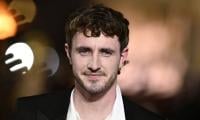Rupee seen range-bound
KARACHI: The rupee would likely remain range-bound in the interbank market over the next week on expectations of stabilisation triggered by the new measures taken by the central bank, traders said.
Rupee hit an all-time weakest level of 170.96 before paring losses as persistent higher dollar demand for import payments, rising import bill, skyrocketing commodity prices, and widening current account deficit put pressure on the domestic currency. Besides, the outflow of dollars from Pakistan to Afghanistan created a greenback shortage, making the rupee vulnerable to losses.
Meanwhile, actions of the State Bank of Pakistan (SBP) eased pressure on the rupee as it placed some curbs on the unwanted outflow of foreign currency. The rupee closed at 170.53 per dollar on Friday.
“I anticipate we will see some sluggish activity on the demand side, and the inflows are likely to balance the demand for the US currency from manufacturing and oil importers,” said a foreign exchange trader at a commercial bank.
However, the rally in the global commodity prices could exert pressure on the rupee, he added.
The global commodity index had been the highest in the last 25 years.
“The range for the rupee should be 170-71 in the coming week.”
Dealers said SBP would be concerned if rupee breached the 171 level as weakening of the local unit was leading to higher inflation, as people paid more for imported goods and services.
Analysts said the future course of the rupee would rely on the resumption of the International Monetary Fund (IMF) programme. The government wants to come up with the most favourable terms in the current circumstances, as it is eager to successfully complete the sixth review of the $6 billion Extended Fund Facility. The high-level discussions with the IMF will be concluded next week.
Foreign exchange reserves were on a decline in the third consecutive week. The country’s reserves fell by $151 million to $26 billion as of October 1. Portfolio outflows accelerated this month decreasing by $34 million in October alone and $176 million in July to date.
The positive thing that happened this week was rosy remittance data, which showed that money sent home by overseas Pakistani workers rose 12 percent to $8.0 billion in the first quarter of the current fiscal year.
Remittances are expected to increase to $30 billion in FY2022 to become the largest source of foreign currency, according to analysts.
"If the first-quarter trend persists, Pakistan remittances could hit the figure of $32 billion during the current financial year. This contributes significantly to countering external pressure on balance of payment," according to the Trust Securities and Brokerage Limited.
Remittances remained above $2 billion since June 2020. The central bank said this is also the seventh consecutive month that inflows were around $2.7 billion on average. Pakistan received record $29.4 billion remittances during the financial year 2020-21 compared to $23 billion it received during the financial year 2019-20. The government expects $31 billion in remittances for the present fiscal year of 2021-22.
-
 Matt Damon On What Kept Ben Affleck Friendship Alive For Decades
Matt Damon On What Kept Ben Affleck Friendship Alive For Decades -
 Ariana Grande Teases Mysterious New Project
Ariana Grande Teases Mysterious New Project -
 Travis Kelce Quietly Exploring TV Future As NFL Decision Looms
Travis Kelce Quietly Exploring TV Future As NFL Decision Looms -
 Kendall Jenner Debunks Longstanding Rumour About Her Sexuality
Kendall Jenner Debunks Longstanding Rumour About Her Sexuality -
 After Skipping Kate Middleton's Event, Princess Eugenie 'ignores' Princess Of Wales's Birthday
After Skipping Kate Middleton's Event, Princess Eugenie 'ignores' Princess Of Wales's Birthday -
 Royal Family Issues Statement On Duchess Sophie's Royal Engagement
Royal Family Issues Statement On Duchess Sophie's Royal Engagement -
 Kate Middleton And Meghan Markle's Decade-long Tale Unfolds
Kate Middleton And Meghan Markle's Decade-long Tale Unfolds -
 Kate Middleton Shares Unexpected Insight From Her Cancer Journey
Kate Middleton Shares Unexpected Insight From Her Cancer Journey -
 Kate Middleton's Birthday Marked By Westminster Abbey Bell-ringing
Kate Middleton's Birthday Marked By Westminster Abbey Bell-ringing -
 Prince Harry's Security Review Still Underway: Report
Prince Harry's Security Review Still Underway: Report -
 Netflix Sci-fi Series Black Mirror Gets An Eighth Season
Netflix Sci-fi Series Black Mirror Gets An Eighth Season -
 Amy Madigan Recalls Husband Ed Harris’ Reaction To Her Transformation In 'Weapons'
Amy Madigan Recalls Husband Ed Harris’ Reaction To Her Transformation In 'Weapons' -
 Sarah Jessica Parker Drops Rare Insight Into 30-year Marriage
Sarah Jessica Parker Drops Rare Insight Into 30-year Marriage -
 Will Venezuela Rebuild Diplomatic Relations With US?
Will Venezuela Rebuild Diplomatic Relations With US? -
 Elton John Shares How He Shaped An Entertaining Persona
Elton John Shares How He Shaped An Entertaining Persona -
 Paul Mescal Hints At New Artistic Turn After Stepping Into McCartney’s Shoes
Paul Mescal Hints At New Artistic Turn After Stepping Into McCartney’s Shoes




